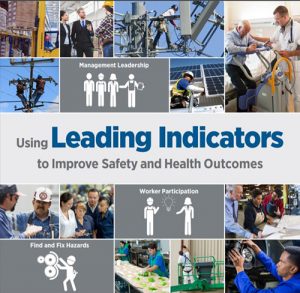On Aug. 9, OSHA launched a new page on its website to help employers understand and use leading indicators.
Leading indicators are factors that can be tracked to prevent injuries and illnesses on a jobsite. This could be the number of managers and workers who attend safety and health training, or the frequency of maintenance tasks that are completed on schedule.
“A good safety and health program uses leading indicators to drive change and lagging indicators to measure effectiveness,” OSHA stated via the webpage. “Leading indicators can play a vital role in preventing worker fatalities, injuries and illnesses and strengthening other safety and health outcomes in the workplace.”
Recent Article: OSHA Requests Industry Feedback on Silica Standard
The webpage also features a downloadable leading indicators guide. The document addresses how to find leading indicators in the data you are already collecting, the features of effective leading indicators, and how to use data and findings to improve your health and safety program.
Key Takeaways on Leading Indicators
Core elements exist for every work site to which leading indicators provide insight. These core elements include: Management leadership, worker participation, hazard identification and assessment, hazard prevention and control, education and training, program evaluation, and internal communications.
Leading indicators for management leadership include:
- Percentage of managers and supervisors who attend mandatory safety and health training for workers.
- Number of times each month that top management initiates discussion of a safety and health topic.
- Average score on survey questions related to workers’ perception of management’s safety and health commitment.
Leading indicators for worker participation include:
- Number of workers asked for feedback on good safety goals ahead of safety meetings.
- Number of workers involved in developing safety procedures.
- Number of workers participating in tool box talks.
Leading indicators for hazard identification and assessment include:
- Frequency with which preventive equipment maintenance tasks are initiated and completed on schedule.
- Number of hours passed after an incident before an investigation is started.
- Percentage of incident investigations that include a root cause investigation.
Creating an Action Plan
Once you’ve gathered the leading indicators for your work site, it’s important to know how to turn this data into actionable items.
Recent Article: Cabinet Manufacturer Cited for Silica, Hearing Violations
Follow these steps to create an action plan for your leading indicators:
- Identify your top problem areas — the hazards with the greatest risk of harming employees.
- Talk with your workers about their safety concerns and what areas you could improve.
- Consider what actions you could take to address your top problem areas or workers’ top concerns.
- Set a goal and choose an indicator to help you achieve your goal.
- Begin collecting leading indicator data.
- Periodically review your results to determine whether the actions and indicator you chose are helping you reach your goal.
- Remember that tracking just one or two indicators can have a positive effect.
Download Using Leading Indicators to Improve Safety and Health Outcomes here.
Your Health & Safety Plan
Maintaining a healthy workforce is easier with regular on-site medical surveillance testing.
Here at Worksite Medical, we bring all the resources of a medical lab directly to you, from blood work and OSHA physicals to respirator fit testing & audiometric exams.
Find your solution today at WorksiteMed.com, or complete the form below to schedule and/or get your free quote!




